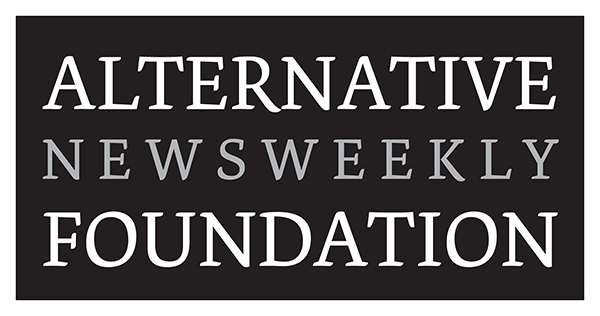Social media began in 1997 with SixDegrees, but really became what we all know with MySpace in 2004. In its 20-plus years of evolution, social media is returning to its roots as a community building and awareness tool. Now is the time to increase your publication’s followers and connections, and here are some tips to help you do it.
General Tips
- Proactively engage as your publication, creating content that the algorithm will prioritize so posts receive engagement. Examples include –
- good news that’s easy to like, love, share and repost
- photos and videos of staff and volunteers in action
- asking open-ended questions with a community building call to action
- Follow partners, funders, and sponsors and proactively engage with their posts to increase exposure and the likelihood your publication reaches a new audience, including potential donors. Always tag them in your posts.
- Spend a minimum of 30 minutes per week building relationships, replying to followers and actively engaging with them, beyond time spent broadcasting. Get to know your community and encourage their participation.
- Be diligent and respond timely to comments, tags, messages and mentions. Neglected individuals don’t stick around, thus impeding your social media growth efforts.
- Have a promotion budget to increase visibility and reach new followers and potential donors. Organic posts just don’t reach folks like they used to.
- Segment campaigns based on the platform and audience. Doing so can produce revenue growth of up to 760% compared to non-segmented campaigns.
- Optimize your content using Social SEO tactics like keyword research, captions, and effective alt text to help social platform search features understand your content, thus increasing the likelihood that folks actively searching for content like yours will find your publication.
Publication’s Website
- Feature social media icons on every page, ideally top right of your header, so the reader does not have to look for them. They can also be in the footer as a second chance.
- Include a call to action with the icons – “stay connected” or “follow us” – and consider a “call-to-follow” popup.
- Add social media icons on “Thank you for subscribing” and other landing pages. Take advantage of this full attention opportunity while the individual is waiting for confirmation.
- It’s low-hanging-fruit to include easy to type social redirect URLs and QR codes.
- Another low-hanging-fruit is adding links and call-to-follow in your email signature line.
- Also include links in newsletters with a call-to-action in the top right corner and in the footer, again a second chance opportunity.
- Once or twice a year, ask email subscribers to follow you on social media.
- When an individual subscribes or makes a donation, they should automatically be sent a follow-up “Thank you” email that includes a social media call-to-follow.
- LinkedIn has evolved beyond a channel to post jobs into a community building forum with a supportive, professional atmosphere. Simply put, it’s just nice. LinkedIn is a must-have for your publication, and ideally executive management have active personal LinkedIn pages and regularly offer thought leadership.
- In 2023, 84% of nonprofits were on LinkedIn.
- Post newsletters for free and share another side of your publication that everyone – beyond current followers – can discover, read and share. Perhaps write an in-depth story of your new hire or intern, how the individual will enhance your publication, and goals for the future. Create 2-4 newsletters per month.
- Increase visibility by inviting personal LinkedIn connections to follow your publication, up to 100 per month for free!
- Keep consistent, yet slightly tailored messaging, by toggling between your publication and personal accounts.
- Native documents such as photos, videos, polls and articles generate more engagement than links, and ideally post 2-3 times per week.
- LinkedIn is also the place to enhance your publication’s branding by giving recognition, endorsements and recommendations to volunteers, staff and colleagues.
- In 2023, Facebook remained the top channel with 99% of nonprofits having a page.
- With so much activity, for organic visibility post interactive, relatable and relevant content more often. Build an emotional connection and value – how your publication covers stories others don’t, and inquire how those stories have impacted readers’ lives.
- If paid boosts are part of your publication’s strategy, consider A/B Testing. With social media growth as the objective, look for goals including awareness and engagement to drive growth of your social ad campaign. Begin with organic posts that are already performing well for your desired growth goals.
- Create a posting calendar that includes social media holidays. As you decide where to post based on your audience’s preferences, let their activity guide your plan for when to post as well.
- Keep consistent, yet slightly tailored messaging, by toggling between your publication and personal accounts.
- Utilize the Reels feature for engaging content and reach individuals who don’t already follow your publication.
Threads
- Consider a Threads account, as 32% of nonprofits already have, especially if you have a large Instagram presence.
- When creating the account, there’s a one time only opportunity to invite all Instagram followers to also follow on Threads. By doing this step, your publication can instantly have a large audience as followers generally opt-in.
- With most followers also on Instagram, be sure Threads content differs so it’s a unique conversation. Being text based, it will be easier to have conversations and build relationships than with Instagram followers.
- While similar to X, Threads is touted as being more friendly. Post 2-3 times per week, and use topic tags, not hashtags.
In summary, be sure to have coordinated and consistent messaging across all avenues – email, website and social media – with slightly different content based on segmentation and social channel audiences. Individuals who follow your publication on several platforms will expect a different relationship on each.So give them what they want! Then monitor the increased engagement, followers and connections, adjust messaging accordingly if necessary, and watch your publication’s community relationships build through social media.





